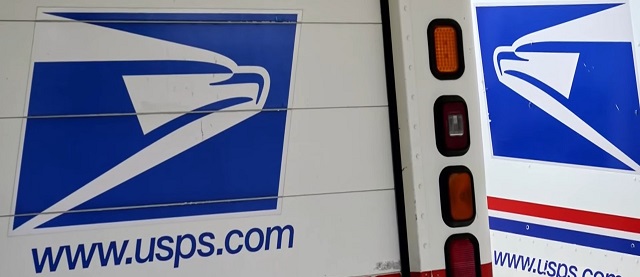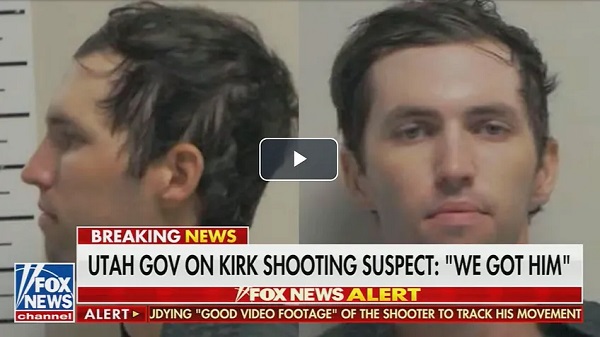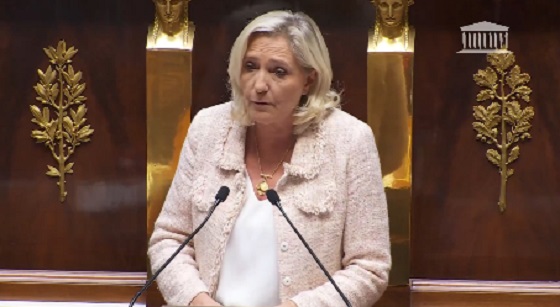Daily Caller
Get Ready For Another Mail-In Ballot Fiasco

From the Daily Caller News Foundation
By John Fund and Hans von Spakovsky
Many states are now sending out mail-in ballots for the November election.
Yet at the same time that so many more voters are depending on the mail to cast their ballots, the two leading national organizations of election officials wrote the U.S. Postal Service demanding immediate action to avoid confusion and chaos with mail-in ballots.
“We implore you to take immediate and tangible corrective action to address the ongoing performance issues with USPS election mail service,” wrote the National Association of State Election Directors and the National Association of Secretaries of State. “Failure to do so will risk limiting voter participation and trust in the election process.” According to the U.S. Election Assistance Commission, mail-in ballots accounted for 43% of the electorate in 2020, a 20-percentage point increase from 2016.
The letter’s list of problems should alarm anyone thinking of voting through the mail instead of going to their polling place to vote in-person. That includes USPS staff nationwide who “are uninformed about USPS policies around election mail,” resulting in “significantly delayed, or otherwise improperly processed” absentee ballots. “Timely postmarked ballots” are being received “10 or more days after postmark,” demonstrating USPS’s “inability to meet their own service delivery deadlines.”
This letter follows a July report from the USPS’s own Inspector General, which warned that its audit of primaries in 13 states found that 2.99% of mail-in ballots reached voters too late and 1.83% were returned to election offices after their legal deadlines. Its list of horror stories included the discovery that “local management at one facility stated they were not aware primary Election Day was that week.”
That means that almost 5% of voters are being disenfranchised, which amounts to hundreds of thousands of votes across the country.
There are reports of other nightmares. Kansas Secretary of State Scott Schwab is “extremely concerned” that in the August primary, 2% of ballots sent by mail were not counted “due to USPS administrative failures.”
“The Pony Express is more efficient at this point” said Schwab.
In July, Utah had a photo-finish Republican congressional primary where the victory margin was 176 votes. But nearly 1,200 mail-in ballots were not counted because they were first sent to a Las Vegas distribution center and not postmarked on time. Most of those ballots were in a county that was carried two-to-one by the candidate who ultimately lost.
The Public Interest Legal Foundation has sued Nevada officials for failure to fix obvious errors on the voter rolls. The organization has found hundreds of questionable voter addresses that include strip clubs, casinos, bars, vacant lots, gas stations, and fast-food restaurants. “Nevada’s policy of automatically mailing a ballot to every active registered voter makes it essential that election officials have accurate voter rolls and are not mailing ballots to addresses where no one lives,” PILF notes.
PILF points out that in 2022, Nevada’s U.S. Senate race was decided by 7,928 votes, which determined party control of that body. The Secretary of State, PILF noted, “published figures showing that 95,556 ballots were sent to undeliverable or ‘bad’ addresses and another 8,036 were rejected upon receipt.” Also: “Another 1.2 million ballots never came back to officials for counting.”
This year, Nevada has another competitive Senate race that could determine the Senate majority.
Nationwide, the U.S. Election Assistance Commission reports that of the almost 91 million mailed ballots sent to voters in all states in 2020, only 70 million were returned.
What happened to the others? Some weren’t filled out. But other completed ballots were probably lost by an increasingly inefficient Postal Service. And election officials complained in their letter to the USPS that election mail being “sent to voters” is being returned as “undeliverable” at a “higher than usual rate.” Some voters registered more than once got more than one ballot.
At least 1.1 million went to outdated addresses. Some may have gone to vacant lots and businesses. Some 500,000 were rejected by election officials when they were returned often due to voter errors that could have been corrected by election officials if the voters had cast their ballot in-person.
Registration lists are notoriously chock full of ineligible, duplicate, fictional and deceased voters, a fact easily exploited to commit fraud. Ballots cast by mail can become the object of intimidation and vote-buying schemes.
In 2005, a bipartisan Commission on Federal Election Reform chaired by former President Jimmy Carter and former Secretary of State James Baker pointed out that “absentee ballots remain the largest source of potential voter fraud.” Even the New York Times admitted in 2012 that “votes cast by mail are less likely to be counted, more likely to be compromised and more likely to be contested than those cast in a voting booth.”
Little has changed, In 2019, a congressional race in North Carolina was thrown out over mail-in ballots gathered through illegal vote trafficking. A judge ordered a new election in the Bridgeport, Connecticut, mayor’s race last year after a video appeared to show two women stuffing suspect large numbers of absentee ballots into drop boxes.
In New York, three Rensselaer County officials are on trial this month accused of mail-in ballot fraud. A former GOP elections commissioner who has already pleaded guilty testified that looser post-COVID mail-in procedures make it much easier to commit voter fraud.
Before Election Day, Postal Service officials must address concerns about delays and mishandling of absentee ballots. Sloppy U.S. voting rules on everything from vote trafficking by third parties to lax or nonexistent ID laws in many states make it vital there be election observers watching every aspect of the voting and tabulation process.
And after the weeks of litigation and delays in counting that a tsunami of mail-in ballots will no doubt create, we should rethink the advice of those who disparage in-person voting and assure us “that the ballots are in the mail.”
After all, if you won the lottery, would you mail your ticket in or appear in person to claim your jackpot?
Hans von Spakovsky is a senior legal fellow in the Edwin Meese III Center for Legal and Judicial Studies at the Heritage Foundation.
John Fund is National Review’s national-affairs reporter.
Crime
Transgender Roomate of Alleged Charlie Kirk Assassin Cooperating with Investigation


From the Daily Caller News Foundation
The man accused of assassinating Turning Point USA (TPUSA) founder Charlie Kirk reportedly lives with a transgender-identifying “partner,” according to Fox News reporter Brooke Singman.
Authorities have arrested Tyler Robinson, 22, accusing him of gunning down Kirk during a TPUSA “Prove Me Wrong” event at Utah Valley University on Wednesday, during which the late activist was debating attendees on a variety of topics, including transgenderism. Authorities say that communications between Robinson and the biological male who identified as a transgender female confirm Robinson as the person responsible for the assassination of Kirk, Singman posted on X Saturday.
Kirk had engaged in a debate about transgender mass shooters with Hudson Kozak shortly before being assassinated. The subject became a hot-button issue following the Aug. 27 shooting during an all-school mass held at Annunciation Catholic School in Minneapolis that left two children dead.
Dear Readers:
As a nonprofit, we are dependent on the generosity of our readers.
Please consider making a small donation of any amount here.
Thank you!
Authorities had recovered a rifle containing ammunition that was reportedly marked with left-wing messaging, from a wooded area near the site of Kirk’s fatal shooting. The phrases included “Hey fascist! Catch!” and “If you read this you are gay LMAO,” according to Republican Utah Gov. Spencer Cox.
Kirk founded TPUSA, an organization for conservative college and high school students, in June 2012, according to the group’s website. He also hosted “The Charlie Kirk Show,” a podcast that later became a radio show on the Salem Radio Network, according to his biography on TPUSA’s site.
Daily Caller
‘You Have No Idea What You Have Unleashed’: Erika Kirk Addresses Supporters For First Time Since Kirk’s Assassination


From the Daily Caller News Foundation
By Hailey Gomez
Erika Kirk, the widow of Turning Point USA founder Charlie Kirk, addressed supporters Friday evening for the first time since her husband’s assassination, saying that her late husband’s movement will “never surrender.”
Kirk, 31, was shot and killed Wednesday while debating students at Utah Valley University in Orem, Utah. Speaking for the first time since the fatal attack, Erika Kirk thanked those who have supported her and her late husband, including both President Donald Trump and Vice President JD Vance, as well as other officials.
“I honestly have no idea what any of this means. I know that God does, but I don’t. But Charlie, baby, I know you do too. So does our Lord. And our world is filled with evil, but our God, you guys, our God is so good, so incredibly good. And we know that for those who love God, all things work together for good, for those who are called according to his purpose,” Erika said. “Already, I have seen the worldwide outpouring of love for my husband. I’ve heard the testimonies from people my husband inspired to get married, to start families, to seek out a relationship with God. It’s the most important, most important one of all.”
“The evildoers responsible for my husband’s assassination have no idea what they have done. They killed Charlie because he preached a message of patriotism, faith, and of God’s merciful love. They should all know this,” Erika added. “If you thought that my husband’s mission was powerful before, you have no idea. You have no idea what you just have unleashed across this entire country and this world. You have no idea. You have no idea the fire that you have ignited within this wife. The cries of this widow will echo around the world like a battle cry.”
Kirk, who regularly spoke at college campuses to debate students on their political beliefs, made his latest stop in Utah, with videos online showing the campus packed with attendees. About 20 minutes into speaking with students, a shot rang out through the crowd, hitting Kirk.
WATCH:
Security rushed the TPUSA founder to the hospital, where he was initially reported to be in stable condition but ultimately succumbed to his injuries.
After a nearly two-day manhunt, authorities announced Friday that Kirk’s suspected killer 22-year-old Tyler Robinson was officially arrested after a family friend reported Robinson to authorities Thursday evening.
Officials said bullet casings from the rifle that was used contained a series of phrases such as “Hey fascist! Catch!” and “If you read this you are gay LMAO.” A third bullet casing also had the engraving of ““bella ciao,” which matches an Italian song name that became a left-wing anthem during World War II.
Erika Kirk went on to say that she refuses to let the movement of TPUSA “die,” adding she will make sure it becomes “stronger, bolder, louder, and greater than ever.”
“And I love knowing that one of his, one of his mottos was never surrender. So I want to tell you that, that we’ll never surrender. We never will. Ever. Our campus tour this fall will continue. There will be even more tours in the years to come. America Fest here in Phoenix this December will go on. It will be greater than ever. The radio and podcast show that he was so proud of will go on,” Erika said. “And in a world filled with chaos, doubt, and uncertainty, my husband’s voice will remain. And it will ring out louder and more clearly than ever. And his wisdom will endure.”
“My favorite, my favorite too, but my husband’s favorite word in the English language was earn. He would call all of you to be people of action who earn the future America deserves. So to all of the young people who felt inspired by my husband’s faith and hard work, all of you already know what Charlie would want you to do,” Erika said.
Kirk’s wife told supporters to continue their on-campus involvement, attend the upcoming TPUSA events, and “most important of all,” get involved in a “Bible believing church.”
“Our battle is not simply a political one. Above all, it is spiritual. It is spiritual. The spiritual warfare is palpable,” Erika added.
WATCH:
Before ending, Erika Kirk recalled how her daughter asked where Kirk had been, telling her that he’s now “on a work trip with Jesus so he can afford your blueberry budget.” She then thanked supporters once again, adding, “God bless you all, and God bless America.”
Since Kirk’s death, supporters, political figures and friends have spoken out, while some Democrats have openly cheered the loss of the TPUSA founder. Vance shared on X late Wednesday how Kirk had impacted life, recalling their friendship beginning in 2017.
Trump also expressed grief, writing on Truth Social that no one “understood or had the Heart of the Youth in the United States of America better than Charlie.” By Thursday, Trump announced he would award Kirk the Presidential Medal of Freedom posthumously.
“Charlie was a giant of his generation, a champion of liberty and an inspiration to millions and millions of people. Our prayers are with his wonderful wife Erika and his beautiful children. Fantastic people they are,” Trump said. “We miss him greatly. I have no doubt that Charlie’s voice and the courage he put into the hearts of countless people, especially young people, will live on.”
-

 espionage20 hours ago
espionage20 hours agoInside Xi’s Fifth Column: How Beijing Uses Gangsters to Wage Political Warfare in Taiwan — and the West
-

 J.D. Tuccille2 days ago
J.D. Tuccille2 days agoAfter Charlie Kirk’s Murder, Politicians Can Back Away From the Brink, or Make Matters Worse
-

 International2 days ago
International2 days agoCharlie Kirk Shooting Suspect Revealed: Here’s What His Ammunition Said
-

 Daily Caller1 day ago
Daily Caller1 day ago‘You Have No Idea What You Have Unleashed’: Erika Kirk Addresses Supporters For First Time Since Kirk’s Assassination
-

 Health2 days ago
Health2 days agoCanadians left with no choice but euthanasia when care is denied
-

 Censorship Industrial Complex19 hours ago
Censorship Industrial Complex19 hours agoDecision expected soon in case that challenges Alberta’s “safe spaces” law
-

 COVID-1913 hours ago
COVID-1913 hours agoWhy FDA Was Right To Say No To COVID-19 Vaccines For Healthy Kids
-

 Crime1 day ago
Crime1 day agoFormer NYPD Inspector Shares What Family Of Alleged Charlie Kirk Assassin Feared Before Turning Him In






